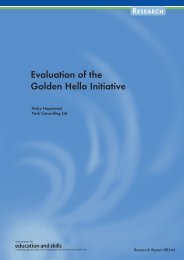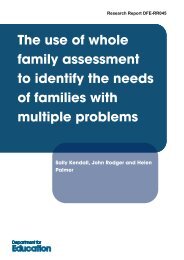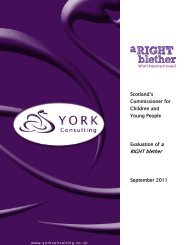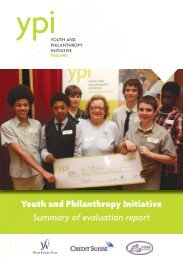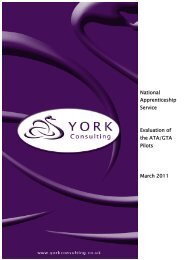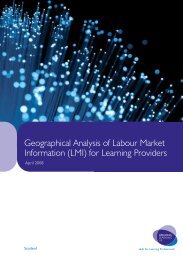Recruitment and Retention in the Post-16 Learning and Skills Sector
Recruitment and Retention in the Post-16 Learning and Skills Sector
Recruitment and Retention in the Post-16 Learning and Skills Sector
Create successful ePaper yourself
Turn your PDF publications into a flip-book with our unique Google optimized e-Paper software.
2 METHODOLOGY AND PROFILE OF RESPONDENTSIntroduction2.1 In this section we outl<strong>in</strong>e <strong>the</strong> respondent profile across <strong>the</strong> differentelements of this study. In addition we mention key methodologicalissues relevant to each element, which are important for <strong>in</strong>terpretation off<strong>in</strong>d<strong>in</strong>gs. The four aspects of <strong>the</strong> study are covered, namely:(i)(ii)(iii)(iv)quantitative telephone survey across learn<strong>in</strong>g <strong>and</strong> skills sector;quantitative telephone survey of HR Managers <strong>in</strong> fur<strong>the</strong>r education;qualitative face to face <strong>in</strong>terviews with teach<strong>in</strong>g <strong>and</strong> learn<strong>in</strong>g staff;qualitative telephone <strong>in</strong>terviews with dissatisfied teach<strong>in</strong>g <strong>and</strong>learn<strong>in</strong>g staff.2.2 Prior to undertak<strong>in</strong>g <strong>the</strong>se research elements a number of earlyconsultations were held with a range of representative organisations<strong>in</strong>clud<strong>in</strong>g <strong>the</strong> Association of Colleges (AoC), <strong>the</strong> Association of Learn<strong>in</strong>gProviders (ALP), <strong>the</strong> National Network of Local Authority Learn<strong>in</strong>g(LEAFEA) <strong>and</strong> <strong>the</strong> Centre for Excellence <strong>in</strong> Leadership (CEL).(i) Quantitative Telephone Survey across Learn<strong>in</strong>g <strong>and</strong><strong>Skills</strong> <strong>Sector</strong>2.3 The key methodological elements relevant to this study are outl<strong>in</strong>edbelow 2 . The survey comprised three elements; a quantitative pilotphase; recruitment of learn<strong>in</strong>g <strong>and</strong> skills organisations <strong>in</strong> order togenerate <strong>in</strong>dividual staff leads, <strong>and</strong> <strong>the</strong> staff survey.2.4 Both <strong>the</strong> recruitment <strong>and</strong> <strong>in</strong>terview methodologies were piloted with<strong>in</strong>stitutions <strong>and</strong> <strong>in</strong>dividual respondents. Forty <strong>in</strong>stitutions were sentletters about <strong>the</strong> research, along with a reply faxback form to <strong>in</strong>dicatewhe<strong>the</strong>r <strong>the</strong>y were will<strong>in</strong>g to participate. Letters were addressed to <strong>the</strong>Chief Executive/ Pr<strong>in</strong>cipal of each organisation.2.5 The pilot confirmed that a ‘cap’ of 30 leads should be applied <strong>in</strong> <strong>the</strong>recruitment phase, as beyond this, <strong>the</strong> process for most organisationsbecame too much of an adm<strong>in</strong>istrative burden (i.e. providers should beasked for a maximum of 30 leads). M<strong>in</strong>or amendments to both <strong>the</strong>recruitment <strong>and</strong> questionnaire were made as a result of <strong>the</strong> pilot.2 Fur<strong>the</strong>r details can be found <strong>in</strong> <strong>the</strong> Technical Report8



